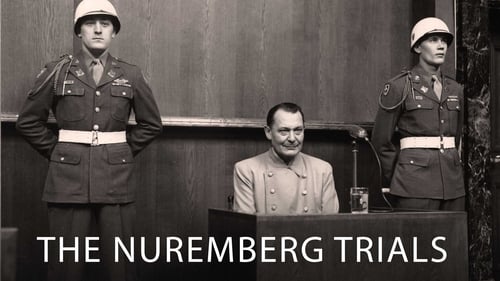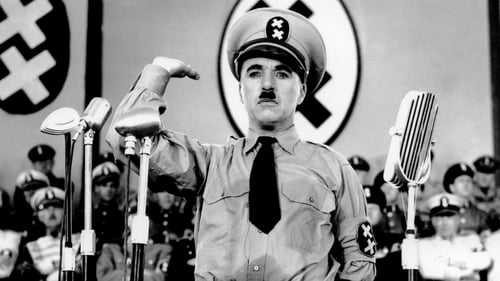
Writer
The Nuremberg trials started in 1945 and marked a milestone in the establishment of international law. The images of high-ranking Nazis in the dock are seared into our collective memory. The Nuremberg trials were a series of military tribunals staged by the Allies after World War Two. The first and best-known trial ended in October 1946 with the sentencing to death of 12 high-ranking Nazis.

Director
The Nuremberg trials started in 1945 and marked a milestone in the establishment of international law. The images of high-ranking Nazis in the dock are seared into our collective memory. The Nuremberg trials were a series of military tribunals staged by the Allies after World War Two. The first and best-known trial ended in October 1946 with the sentencing to death of 12 high-ranking Nazis.

Writer
Countless people around the world know the pictures from Leni Riefenstahl's films, even if they have not seen them in their entirety. The work of the German director has burned itself into the collective memory. Even decades after the end of the Nazi era, she showed no remorse and presented herself as an apolitical, naive follower of the Nazi criminal regime. Her artistic service for the cinema was always recognized. But book author Nina Gladitz shows after decades of research that Hitler's favorite filmmaker was not only a follower, but also a perpetrator during the Third Reich, who instrumentalized other filmmakers such as the brilliant cinematographer Willy Zielke in order to gain fame for herself.

Director
Countless people around the world know the pictures from Leni Riefenstahl's films, even if they have not seen them in their entirety. The work of the German director has burned itself into the collective memory. Even decades after the end of the Nazi era, she showed no remorse and presented herself as an apolitical, naive follower of the Nazi criminal regime. Her artistic service for the cinema was always recognized. But book author Nina Gladitz shows after decades of research that Hitler's favorite filmmaker was not only a follower, but also a perpetrator during the Third Reich, who instrumentalized other filmmakers such as the brilliant cinematographer Willy Zielke in order to gain fame for herself.

Director

Director
A documentary about the political entanglement between the Wagner Family and the leadership of the Third Reich.

Director

Screenplay

Director

Director
By early in the twentieth century, Nuremberg was regarded as the most anti-Semitic city in Europe. By 1929, Hitler had decided to make Nuremberg the "City of the Party Rallies" and a symbol representing the greatness of the German Empire. Even today, it is possible to see signs in Nuremberg of the megalomaniac proportions that the system was to assume.

Director
More than any other historical documents, It is the personal private letters written by a people to "their" dictator that provide the most intimate glimpses of the history of the Third Reich. A treasure of more than 100,000 such letters were recently found, hidden in a secret Russian archive. The uncensored letters reveal the true feelings of the German people - their hopes, longings and fears; also love letters, declarations of loyalty, birthday wishes and the occasional word of protest. Like a seismograph, it mirrors the change in mood in Nazi Germany, providing a reflection of the German spirit in the years from 1932 to 1945. A.K.A. Dear Uncle Adolf.

Director

Director

Director
Born into a Bavarian bourgeois family, Heinrich Himmler became the driving force behind the indescribable crimes that made the Nazi regime so unique in modern history.

Writer
Born into a Bavarian bourgeois family, Heinrich Himmler became the driving force behind the indescribable crimes that made the Nazi regime so unique in modern history.

Director
One journalist described it as a chance "to see justice catch up with evil." On November 20, 1945, the twenty-two surviving representatives of the Nazi elite stood before an international military tribunal at the Palace of Justice in Nuremberg, Germany; they were charged with the systematic murder of millions of people. The ensuing trial pitted U.S. chief prosecutor and Supreme Court judge Robert Jackson against Hermann Göring, the former head of the Nazi air force, whom Adolf Hitler had once named to be his successor. Jackson hoped that the trial would make a statement that crimes against humanity would never again go unpunished. Proving the guilt of the defendants, however, was more difficult than Jackson anticipated. This American Experience production draws upon rare archival material and eyewitness accounts to recreate the dramatic tribunal that defines trial procedure for state criminals to this day.

Producer
One journalist described it as a chance "to see justice catch up with evil." On November 20, 1945, the twenty-two surviving representatives of the Nazi elite stood before an international military tribunal at the Palace of Justice in Nuremberg, Germany; they were charged with the systematic murder of millions of people. The ensuing trial pitted U.S. chief prosecutor and Supreme Court judge Robert Jackson against Hermann Göring, the former head of the Nazi air force, whom Adolf Hitler had once named to be his successor. Jackson hoped that the trial would make a statement that crimes against humanity would never again go unpunished. Proving the guilt of the defendants, however, was more difficult than Jackson anticipated. This American Experience production draws upon rare archival material and eyewitness accounts to recreate the dramatic tribunal that defines trial procedure for state criminals to this day.

Director
Adolf Hitler pasó los últimos diez días de su vida en un búnker debajo de la Cancillería del Reich. No dispuesto a enfrentar las consecuencias de la derrota, el dictador terminó su propia vida el 30 de abril de 1945 en este complejo subterráneo fortificado. Con entrevistas exclusivas con los últimos supervivientes del círculo interno de Hitler y extensas imágenes de archivo, Death in the Bunker es una mirada iluminadora de las decisiones finales del Führer en preparación para su suicidio.

Director
After suffering heavy losses of aircraft during attacks on German factories, Winston Churchill orders cities to be targeted in order to smash German morale and reduce the number of workers available for the Nazi war machine. Hundreds of thousands of German civilians are killed as incendiary bombs turn the center of cities like Hamburg and Dresden into tornados of fire. Sixty years later, a new debate is underway over the reasons for this lethal bombing campaign. Were these relentless aerial attacks on German cities, which killed so many and destroyed so much, a necessary tactic in the war against Hitler? Or was it an act of revenge by the British and Americans? Using rare film footage (much of it in color) and stirring interviews with historians, former bomber pilots and survivors of the destruction, this extraordinary film brings to light the devastating allied air campaign against Nazi Germany.

Director
A look at the parallel lives of Charlie Chaplin and Adolf Hitler and how they crossed with the creation of the film “The Great Dictator,” released in 1940.

Director
A history of Nazi television programming and technology, from 1935 to 1944.

Writer

Director

Director
This remarkable trove of color footage, assembled from far-flung private and state collections, presents Hitler's Europe as never seen before. Amateur film enthusiasts - soldiers, tourists, Hitler's own pilot, even Hitler's mistress, Eva Braun - began experimenting with color film in the late 1930s, their camera eye recording the Third Reich from every angle. Some of this film was only recently uncovered in former Soviet-bloc archives, hidden for almost 60 years; all of it, thanks to digital technology, has been newly transferred to video with surprising clarity. (This documentary was produced with two different narratives, both an English and German language version.)














